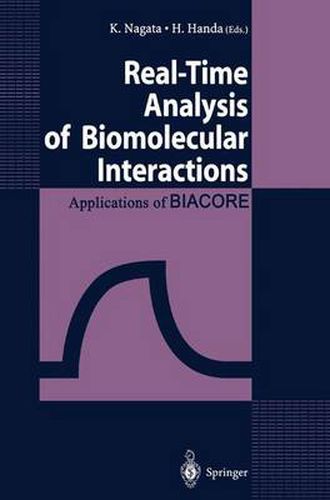Readings Newsletter
Become a Readings Member to make your shopping experience even easier.
Sign in or sign up for free!
You’re not far away from qualifying for FREE standard shipping within Australia
You’ve qualified for FREE standard shipping within Australia
The cart is loading…






This title is printed to order. This book may have been self-published. If so, we cannot guarantee the quality of the content. In the main most books will have gone through the editing process however some may not. We therefore suggest that you be aware of this before ordering this book. If in doubt check either the author or publisher’s details as we are unable to accept any returns unless they are faulty. Please contact us if you have any questions.
Elaborate and complex interactions among the molecules that make up all living or- ganisms are the basis by which those organisms carry out their existence. All metabo- lism or vital activities of living organisms are attributed to the interactions of numbers of biomolecules, including protein-protein interactions. Cell growth and differentia- tion, development and generation or regeneration of tissue, and the occurrence of or protection against various diseases are triggered, conducted, and maintained by the complex sequential interactions among molecules both inside and outside the cells. Each protein has its own function, but it cannot function by itself. For example, enzymes catalyze reactions only through transient interaction with their substrates. In some cases, proteins carry out their functions only after they form a multi subunit com- plex. GenerallY, proteins, nucleotides, lipids, sugars, and other small molecules func- tion through the interaction of mUltiple molecules either simultaneously or succes- sively. In the case of signal transduction, for example, a ligand first binds to the cell sur- face receptors, the ligand-receptor complex is internalized, signals are transferred one by one through the intracellular signal molecules, and finally the signal reaches the target molecules. In these processes, the signal is mediated mainly by phosphorylation, and this phosphorylation is transduced from upstream to downstream by transient in- teractions of the donors with the acceptors. Phosphorylation and de-phosphorylation themselves are also characterized as transient interactions between phosphates and tar- get proteins.
$9.00 standard shipping within Australia
FREE standard shipping within Australia for orders over $100.00
Express & International shipping calculated at checkout
This title is printed to order. This book may have been self-published. If so, we cannot guarantee the quality of the content. In the main most books will have gone through the editing process however some may not. We therefore suggest that you be aware of this before ordering this book. If in doubt check either the author or publisher’s details as we are unable to accept any returns unless they are faulty. Please contact us if you have any questions.
Elaborate and complex interactions among the molecules that make up all living or- ganisms are the basis by which those organisms carry out their existence. All metabo- lism or vital activities of living organisms are attributed to the interactions of numbers of biomolecules, including protein-protein interactions. Cell growth and differentia- tion, development and generation or regeneration of tissue, and the occurrence of or protection against various diseases are triggered, conducted, and maintained by the complex sequential interactions among molecules both inside and outside the cells. Each protein has its own function, but it cannot function by itself. For example, enzymes catalyze reactions only through transient interaction with their substrates. In some cases, proteins carry out their functions only after they form a multi subunit com- plex. GenerallY, proteins, nucleotides, lipids, sugars, and other small molecules func- tion through the interaction of mUltiple molecules either simultaneously or succes- sively. In the case of signal transduction, for example, a ligand first binds to the cell sur- face receptors, the ligand-receptor complex is internalized, signals are transferred one by one through the intracellular signal molecules, and finally the signal reaches the target molecules. In these processes, the signal is mediated mainly by phosphorylation, and this phosphorylation is transduced from upstream to downstream by transient in- teractions of the donors with the acceptors. Phosphorylation and de-phosphorylation themselves are also characterized as transient interactions between phosphates and tar- get proteins.